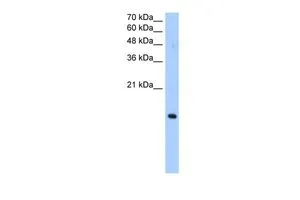
WB analysis of HepG2 cells using GTX46384 PILRA antibody at 0.2-1microg/ml.
PILRA antibody, N-term
GTX46384
Overview
- SupplierGeneTex
- Product NamePILRA antibody, N-term
- Delivery Days Customer9
- Application Supplier NoteWB: 0.2-2.5 ug/ml. *Optimal dilutions/concentrations should be determined by the researcher.Not tested in other applications.
- ApplicationsWestern Blot
- CertificationResearch Use Only
- ClonalityPolyclonal
- Concentration0.5-1 mg/ml
- ConjugateUnconjugated
- Gene ID29992
- Target namePILRA
- Target descriptionpaired immunoglobin like type 2 receptor alpha
- Target synonymscell surface receptor FDF03; FDF03; inhibitory receptor PILR-alpha; paired immunoglobulin-like type 2 receptor alpha
- HostRabbit
- IsotypeIgG
- Protein IDQ9UKJ1
- Protein NamePaired immunoglobulin-like type 2 receptor alpha
- Scientific DescriptionCell signaling pathways rely on a dynamic interaction between activating and inhibiting processes. SHP-1-mediated dephosphorylation of protein tyrosine residues is central to the regulation of several cell signaling pathways. Two types of inhibitory receptor superfamily members are immunoreceptor tyrosine-based inhibitory motif (ITIM)-bearing receptors and their non-ITIM-bearing, activating counterparts. Control of cell signaling via SHP-1 is thought to occur through a balance between PILRalpha-mediated inhibition and PILRbeta-mediated activation. These paired immunoglobulin-like receptor genes are located in a tandem head-to-tail orientation on chromosome 7. This particular gene encodes the ITIM-bearing member of the receptor pair, which functions in the inhibitory role. Alternative splicing has been observed at this locus and three variants, each encoding a distinct isoform, are described. [provided by RefSeq, Jul 2008]
- ReactivityHuman
- Storage Instruction-20°C or -80°C,2°C to 8°C
- UNSPSC12352203
